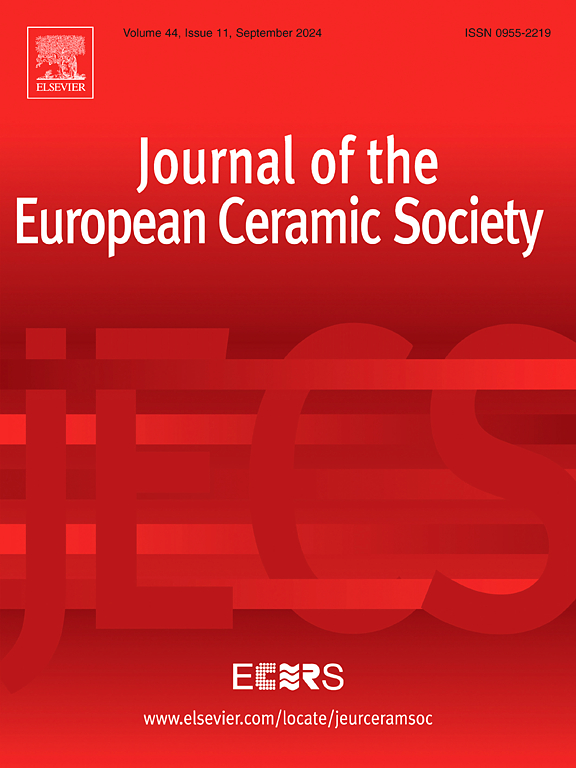Microwave sintering of SnO2/ZnO ceramics: Effects of SiC susceptor
IF 6.2
2区 材料科学
Q1 MATERIALS SCIENCE, CERAMICS
Journal of The European Ceramic Society
Pub Date : 2025-05-26
DOI:10.1016/j.jeurceramsoc.2025.117560
引用次数: 0
Abstract
This study investigates the effect of a SiC susceptor on the microwave (MW) heating of pure SnO2, pure ZnO and their composites in different weight ratios (S80-Z20, S50-Z50, S20-Z80). All samples were sintered with and without a SiC susceptor in a multimode MW cavity, and additional MW heating experiments were conducted in a single-mode cavity to observe the MW/material interactions of the pure binary oxides. The role of the SiC susceptor—commonly used to enhance MW absorption—was the key focus. Power curves are discussed in detail since they show the changes in material properties at certain temperatures. Our results show that SnO2 and ZnO ceramics can be heated even without a susceptor, with pure SnO2 initiating heating faster than ZnO and composites exhibiting intermediate behavior. The microstructure, linear shrinkage, bulk density, porosity, and phase composition were characterized for all prepared samples under both sintering conditions.
微波烧结SnO2/ZnO陶瓷:SiC感受器的影响
本文研究了SiC感受器对不同重量比(S80-Z20、S50-Z50、S20-Z80)的纯SnO2、纯ZnO及其复合材料微波加热的影响。在多模微波腔中分别对样品进行了添加和不添加SiC感受器的烧结,并在单模微波腔中进行了额外的微波加热实验,以观察纯二元氧化物的微波/材料相互作用。碳化硅感受器(通常用于增强毫瓦吸收)的作用是重点。由于功率曲线显示了材料在一定温度下的性能变化,因此对其进行了详细的讨论。我们的研究结果表明,SnO2和ZnO陶瓷即使没有感受器也可以加热,纯SnO2比ZnO更快地开始加热,复合材料表现出中间行为。在两种烧结条件下,对制备的样品的微观结构、线收缩率、体积密度、孔隙率和相组成进行了表征。
本文章由计算机程序翻译,如有差异,请以英文原文为准。
求助全文
约1分钟内获得全文
求助全文
来源期刊

Journal of The European Ceramic Society
工程技术-材料科学:硅酸盐
CiteScore
10.70
自引率
12.30%
发文量
863
审稿时长
35 days
期刊介绍:
The Journal of the European Ceramic Society publishes the results of original research and reviews relating to ceramic materials. Papers of either an experimental or theoretical character will be welcomed on a fully international basis. The emphasis is on novel generic science concerning the relationships between processing, microstructure and properties of polycrystalline ceramics consolidated at high temperature. Papers may relate to any of the conventional categories of ceramic: structural, functional, traditional or composite. The central objective is to sustain a high standard of research quality by means of appropriate reviewing procedures.
 求助内容:
求助内容: 应助结果提醒方式:
应助结果提醒方式:


